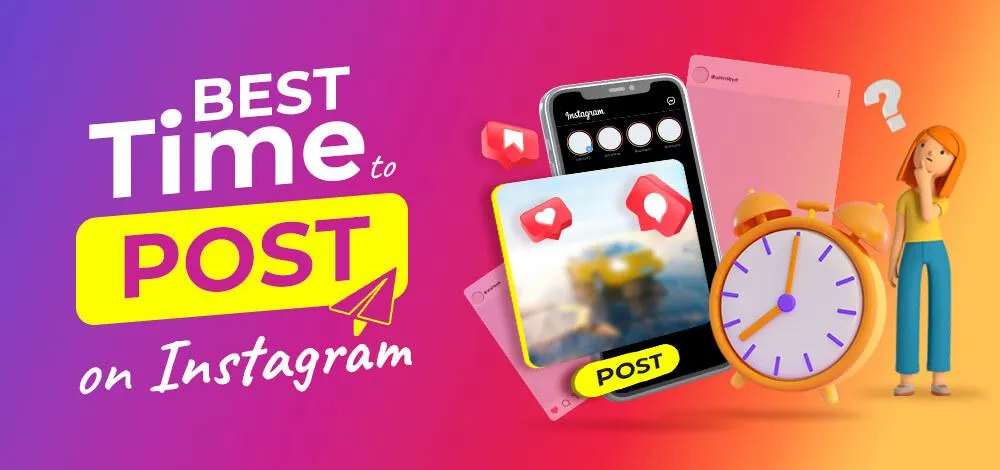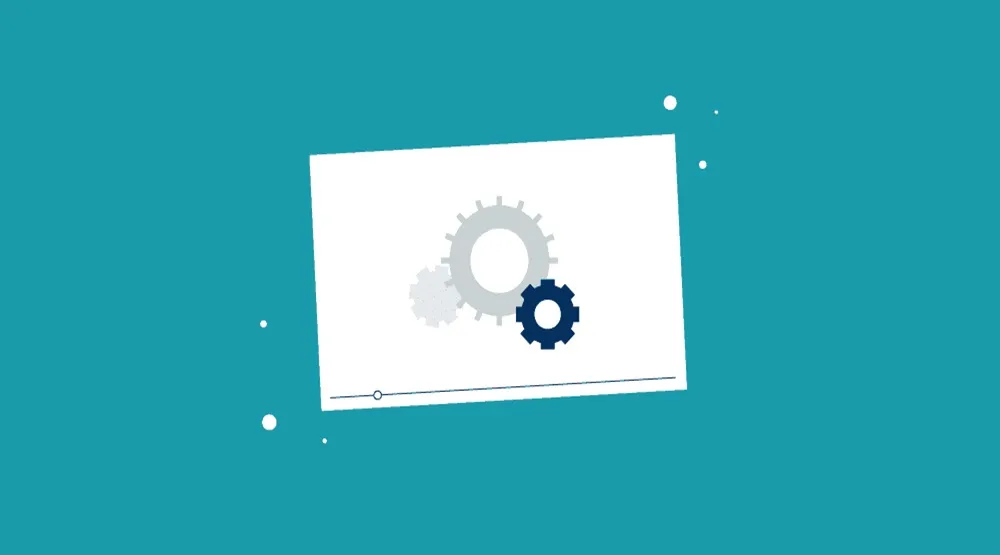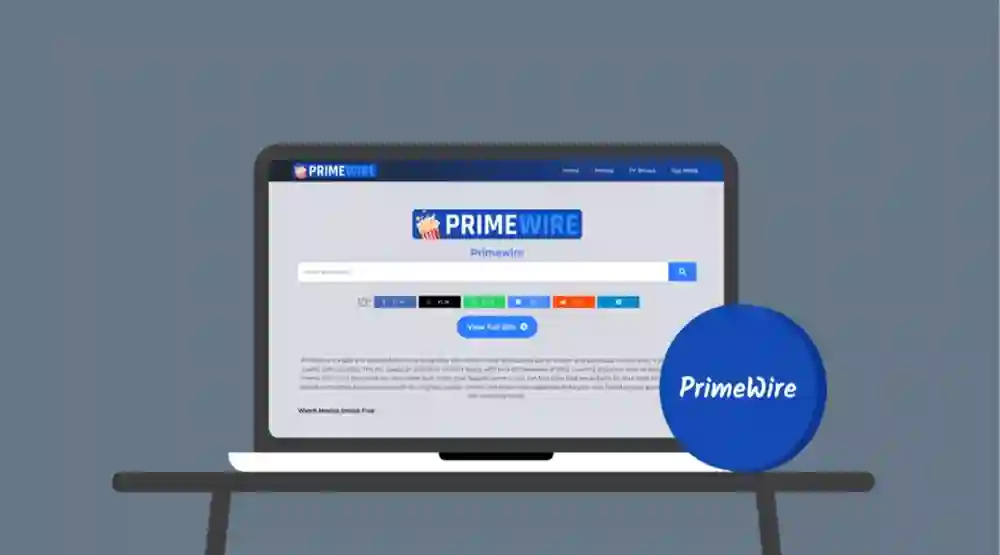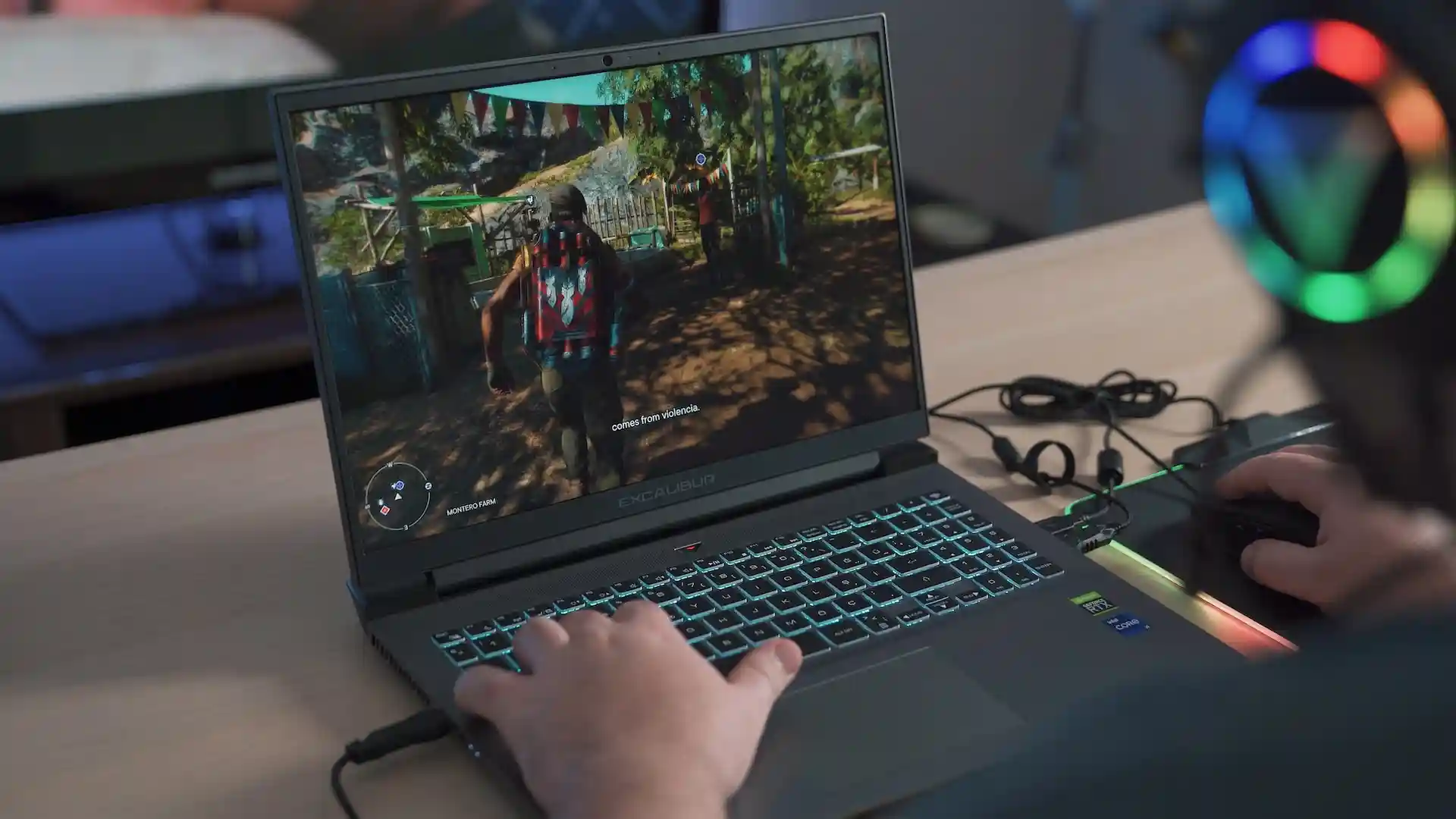Social Media
Optimizing Your Reach: A Guide to Posting Times on Instagram

In the bustling world of social media, timing plays a crucial role in the success of your content. For Instagram users seeking to maximize their reach and engagement, understanding the best times to post is essential. With over one billion monthly active users, Instagram offers a vast potential audience, but with such a competitive landscape, knowing when to share your content can make all the difference. In this comprehensive guide, we’ll explore the strategies and considerations for optimizing your reach through strategic posting times on Instagram.
Understanding the Algorithm
Before diving into the specifics of posting times, it’s crucial to understand how the Instagram algorithm works. While the platform has evolved over the years, the algorithm primarily prioritizes content based on relevance, engagement, and timeliness.
Relevance: The algorithm aims to show users content that is relevant to their interests, preferences, and past interactions on the platform.
Engagement: Posts that generate high levels of engagement, such as likes, comments, shares, and saves, are more likely to be prioritized by the algorithm and appear higher in users’ feeds.
Timeliness: The recency of a post also factors into its visibility, with newer content often receiving higher priority in users’ feeds.
Keeping these factors in mind, the goal of optimizing your posting times is to ensure that your content is seen by as many users as possible when they are most active and likely to engage with it.
Know Your Audience
The first step in determining the best posting times for your content is understanding your audience. Analyzing your followers’ demographics, behaviors, and preferences can provide valuable insights into when they are most active on Instagram.
Start by reviewing your Instagram Insights, which offers a wealth of data about your audience’s demographics, location, and online activity. Pay attention to metrics such as peak activity times, average engagement rates, and top locations to identify patterns and trends in your audience’s behavior.
Additionally, consider conducting surveys or polls to gather feedback directly from your followers about their preferred posting times and content preferences. By soliciting input from your audience, you can gain valuable insights into their habits and preferences, helping you tailor your posting strategy to better meet their needs.
Experiment with Posting Times
Once you have a better understanding of your audience’s behavior, it’s time to experiment with different posting times to see what works best for your content. Start by scheduling posts at different times throughout the day and track their performance using Instagram Insights or third-party analytics tools.
Be prepared to iterate and refine your posting strategy based on the results of your experiments. Pay attention to engagement metrics such as likes, comments, shares, and saves to determine which posting times generate the highest levels of interaction with your content. Over time, you’ll be able to identify patterns and trends in your audience’s behavior and adjust your posting schedule accordingly.
Consider Time Zones
When determining the best posting times for your content, it’s essential to consider the time zones of your target audience. If your followers are spread across different regions or countries, you’ll need to adjust your posting schedule accordingly to ensure that your content reaches them at optimal times.
Take advantage of Instagram Insights to identify the geographical locations of your audience and tailor your posting schedule to accommodate different time zones. Consider scheduling posts at times when your audience in different regions is most active, or use scheduling tools to automate posts based on specific time zones.
Leverage Peak Activity Times
While the best posting times can vary depending on your audience and industry, there are some general trends and peak activity times to keep in mind. According to research and industry data, some of the best times to post on Instagram for maximum engagement are:
- Weekdays: Monday to Friday, with peak activity times typically occurring during lunchtime (12:00 PM to 1:00 PM) and in the evening (6:00 PM to 9:00 PM).
- Weekends: Saturday and Sunday, with peak activity times often occurring in the late morning (10:00 AM to 11:00 AM) and early afternoon (1:00 PM to 3:00 PM).
These peak activity times may vary depending on your specific audience and industry, so be sure to monitor performance metrics and adjust your posting schedule accordingly.
Utilize Instagram Insights and Analytics Tools
Instagram Insights is a valuable tool that provides data and analytics to help you optimize your posting strategy. In addition to offering insights into your audience’s demographics and behavior, Insights also provides data on post performance, including reach, impressions, engagement, and follower activity.
Take advantage of Insights to track the performance of your posts over time and identify trends in your audience’s behavior. Pay attention to metrics such as reach and engagement rate to gauge the effectiveness of your posting strategy and make data-driven decisions about when and what to post.
In addition to Instagram Insights, consider using third-party analytics tools to gain deeper insights into your audience’s behavior and optimize your posting strategy. Tools such as Sprout Social, Hootsuite, and Buffer offer advanced analytics and scheduling features that can help you track performance metrics, identify trends, and streamline your social media management workflow.
Stay Flexible and Adaptive
In the ever-evolving landscape of social media, trends and user behavior can change rapidly. What works today may not necessarily work tomorrow, so it’s essential to stay flexible and adaptive with your posting strategy.
Keep an eye on industry trends, platform updates, and changes in user behavior to stay ahead of the curve and adjust your posting strategy accordingly. Monitor your competitors and industry leaders to see what strategies are working for them and incorporate those insights into your own approach.
Additionally, be open to experimenting with new formats, content types, and posting times to keep your audience engaged and interested. Don’t be afraid to take risks and try out different approaches to see what resonates with your audience and drives the most engagement.
Conclusion
Optimizing your reach on Instagram through strategic posting times requires a combination of data analysis, experimentation, and adaptability. By understanding your audience’s behavior, experimenting with different posting times, leveraging Instagram Insights and analytics tools, and staying flexible with your approach, you can maximize the visibility and engagement of your content on the platform.
Remember that there is no one-size-fits-all solution when it comes to finding the best time to post on Instagram. What works for one brand or audience may not necessarily work for another, so it’s essential to tailor your approach to meet the specific needs and preferences of your audience.
By continuously monitoring performance metrics, staying abreast of industry trends, and adapting your strategy accordingly, you can ensure that your content reaches its intended audience at the right time and drives meaningful engagement on Instagram.

Social Media
Flixpress Intro Maker – Create Free Intros Online Easily

Okay, so let me just lay this out for you: you’ve got a killer idea for a YouTube channel or maybe you’re putting together a promo video for your small business, and you know your audience is going to need something catchy at the start. Something that grabs their attention before they click away to the next viral cat video. Here’s the thing: you could hire a video editor. Or you could pull a me and spend 10 hours trying to learn After Effects, and then give up halfway through (spoiler alert: I did). Or… you could use Flixpress Intro Maker to whip up a snappy intro in, like, 10 minutes—without the stress and without spending a dime. Yeah, Flixpress is a game-changer. And I’m about to tell you why.
What is Flixpress?
So, let me paint the picture: You’ve got zero experience with video editing. Maybe you’ve fiddled with a couple of apps here and there. But when it comes to creating an actual intro, you’re like, “Wait—what are transitions? And how do I add text without it looking like a mess?” Enter Flixpress.
Flixpress is a super chill, online tool that lets anyone, even someone like me (who’s better at ruining videos than creating them), make professional intros, outros, and all that fun stuff. I mean, there’s no complicated software to download or anything. You just log in, pick a template, customize it, and boom—intro done. The best part? It’s free. Well, mostly. But we’ll get to that.
Why I Recommend the Flixpress Intro Maker
I’ve tried a lot of video creation tools in my time. Some were okay, some were absolute nightmares. But Flixpress? Totally different vibe. Here’s why it stood out to me:
1. Flixpress Free Intro (No Wallet Crying)
Look, we all know the drill: when something is “free,” it’s usually a bait-and-switch. They offer you the basics, then hit you with some crazy fees to unlock the good stuff. But nope. Flixpress lets you create a solid, professional-looking intro for free. There’s a catch (obviously), but the free version is still pretty wicked. You get access to a bunch of templates, and the best part? No watermark. I mean, really. Who wants a big ol’ “made with X tool” slapped on their videos?
2. No Software Headaches
Remember that time I tried downloading a “beginner-friendly” video editor, only for my computer to crash five minutes in? Yeah, that was fun. But with Flixpress intro maker, you don’t need to download anything. You can do everything right from your browser. It’s like the video editing version of putting on sweatpants and binge-watching Netflix—except you’re actually creating something.
3. Templates Galore
Look, not all of us are designers. Or video editors. Or even, like, good at anything artistic. But Flixpress comes to the rescue with a whole bunch of customizable templates. There’s something for everyone: corporate, fun, cinematic, sci-fi (my personal favorite—because who doesn’t want their YouTube intro to look like Star Wars?). I’m not saying these templates will make you a pro right away, but they’ll definitely help you fake it until you make it.
4. Super Easy to Use
When I first tried Flixpress, I expected the whole thing to be a nightmare. But turns out, it’s way easier than I thought. Drag-and-drop. Customize. Hit play. Done. You don’t need a PhD in video editing, which is a good thing because I barely graduated high school. My first intro on Flixpress looked so good, I almost wondered if I had hired a pro. Almost.
Key Features of Flixpress
Alright, let’s break down exactly what makes Flixpress worth using, starting with the free version. Spoiler: It’s solid. Here’s what you can expect:
Flixpress Free Intro Templates
The free intro templates available on Flixpress are surprisingly high-quality. I was expecting some basic options that looked like they were made in 2008, but no. These templates are sleek, modern, and actually pretty diverse. Whether you’re creating a flixpress intro for a YouTube channel, a wedding video, or a business promo, there’s a template for that. And the fact that you can use them for free? Yeah, that’s like hitting the jackpot of video-making tools.
Customizable Text, Music, and Logos
Once you pick your template, the real fun begins. Flixpress intro maker lets you go to town customizing your intro. Text? Add your channel name, tagline, or whatever you want. Music? You can upload your own jams or use one of their tracks. Logos? Of course. You can slap your own logo onto the intro, giving it that professional touch. Now, the first time I uploaded my logo, it was, uh… blurry. Like a bad Instagram filter. But once I figured out the right file type, the intro turned out chef’s kiss.
Download Without the Watermark
The best part about Flixpress free intro? It doesn’t hit you with that annoying watermark that ruins everything. Other platforms will slap a big “Created with XYZ” on your intro, but not Flixpress. They let you keep it clean. And honestly, that’s a big deal if you’re trying to look professional. I used to have to manually edit out watermarks from my old videos, and trust me, it’s a headache.
How to Create a Flixpress Intro
So now you’re probably wondering, “Okay, you’ve sold me. But how the heck do I make one?” Don’t worry—I’ve got you. Here’s a step-by-step guide on how to create your own flixpress intro:
Step 1: Sign Up (It’s Free)
First thing’s first: sign up for Flixpress. It takes like two seconds. I signed up while waiting in line at my local coffee shop, and honestly, I felt like I was doing something productive for once. Maybe that’s just me, though.
Step 2: Pick a Template
Once you’re in, you’ll get to choose from a bunch of templates. I swear, there’s something for everyone. Want an epic space intro? Done. Need something sleek and professional? Also done. Take your time—there’s no rush. Unless, you know, you’re on a deadline. No judgment.
Step 3: Customize
Okay, now comes the fun part. You can tweak the text, change the colors, adjust the timing, and upload your own stuff. I remember the first time I added a logo—it looked terrible. Too big. Too small. Just wrong. But with Flixpress, you can keep adjusting until it feels right. And trust me, you’ll get it there.
Step 4: Preview and Download
Once everything looks good, hit that preview button. It’s like checking if your shoes match your shirt before you go out—except this time, you’re checking if your video intro is on point. If it looks good, hit “Download.” And boom. You’ve got yourself a high-quality intro. No watermark. No stress.
Fast-Forward: Flixpress Free Intro – How It Works
Now, you might be thinking, “Yeah, but what’s the catch?” Here’s the deal: the free version of Flixpress gives you access to a decent selection of templates. You get to create a solid intro with no watermark and no fees. But, like anything in life, if you want extra—higher-quality video downloads, more templates, and maybe a few advanced features—you can upgrade. But, for the most part, the free version will have you looking like a pro. Trust me, my first intro was completely free—and it looked so legit I sent it to my friends for feedback (they were impressed, but I could tell they were low-key judging my weirdly specific text animations).
Benefits for YouTube Channels
I’m not saying you have to be a YouTube superstar to make use of Flixpress intro maker—but if you are, here’s why you need it:
1. Look Professional
A good intro makes you look like you know what you’re doing. It’s like walking into a room and shaking hands with confidence. A flixpress intro helps you do that with your videos. Trust me, it’s one of those “fake it till you make it” things.
2. Save Time
I used to spend hours messing around with complicated editing software, trying to get the perfect intro. With Flixpress intro maker, I could make my intro in less than 15 minutes. I mean, I could make a sandwich in the time it took me to create an intro before. Priorities, y’all.
3. Consistency Is Key
With Flixpress, you can create an intro that matches your brand. Want your videos to have a consistent look and feel? You can set the tone from the start with a killer intro. Bonus: Your viewers will notice. They might not say anything, but they’ll feel it. Like how you feel that last sip of coffee in the morning when it’s just right.
Flixpress vs. Other Intro Makers
Okay, so I’ve tried a few other intro makers in my day. Some were good, some were… questionable. Let’s compare Flixpress to the others:
Ease of Use:
Honestly? Flixpress is the easiest. I don’t know how they did it, but it’s like they cracked the code. Simple, drag-and-drop interface. Everything’s intuitive. I didn’t need a tutorial.
Quality:
I won’t name names, but let’s just say other platforms make your intro look like it was done in 2005. Flixpress intros, on the other hand, look current. Clean. Professional.
Watermark-Free:
Many other free intro makers have the audacity to slap a watermark all over your work. Not Flixpress. That’s a solid win in my book.
Wrapping It Up
Anyway, here’s the kicker: Flixpress Intro Maker is one of those tools that’ll save you both time and money. Whether you’re a YouTuber, a business owner, or just someone trying to get creative with their content, this tool has your back. You can create high-quality intros without being a video editing wizard. The free version is actually free, and it’s good enough to make your videos stand out in a crowded digital world. Trust me, it’s worth checking out. Now go ahead—create that flixpress intro and make your video shine!
Social Media
Sites Like Primewire: Beat Spilling Alternatives

When it comes to online spilling, Sites like Primewire have picked up gigantic ubiquity. These stages permit clients to get to motion pictures, TV appears, and other substance for free, frequently advertising a wide run of titles that are difficult to discover somewhere else. Be that as it may, not all spilling Sites are break even with in terms of usefulness, quality, and security.
Whether you’re looking for an elective to Primewire due to its insecurity, downtime, or basically looking for a way better client encounter, this article gives a comprehensive list of beat gushing stages. These Sites not as it were offer a comparative encounter to Primewire, but moreover incorporate highlights and substance that may cater to different excitement preferences.
1. 123Movies
123Movies has been one of the most well known gushing websites, known for advertising free get to to motion pictures and TV arrangement. This location gives a clean, easy-to-navigate interface that permits clients to browse through a enormous library of movies and appears. Whereas 123Movies has confronted legitimate challenges in the past, numerous reflect Sites proceed to give get to to its enormous collection of media.
Why It’s a Extraordinary Alternative:
Large Substance Library: From blockbusters to indie movies, 123Movies offers a wide variety.
User-Friendly Interface: No complicated route, making it simple to discover the motion picture or appear you need to watch.
Free Get to: Like Primewire, it gives get to to substance without any membership fees.
2. Putlocker
Putlocker is another well known stage known for its free spilling of motion pictures and TV appears. In spite of the fact that it has been subject to different space changes due to copyright encroachment issues, it still oversees to keep up a steadfast client base. The site offers high-quality substance with negligible advertisements, and it is known for its quick spilling speed.
Why It’s a Incredible Alternative:
Simple and Direct: No superfluous advertisements or pop-ups. Extensive Motion picture Collection: Whether it’s the most recent discharge or classic motion pictures, Putlocker has it all.
Multiple Spilling Joins: If one connect doesn’t work, there are choices available.
3. SolarMovie
SolarMovie is another phenomenal elective to Sites like Primewire. This stage offers a tremendous collection of motion pictures and TV appears over different sorts, with visit upgrades. SolarMovie permits clients to stream substance in HD quality and bolsters diverse video resolutions, guaranteeing a smooth seeing experience.
Why It’s a Incredible Alternative:
- HD Spilling: Appreciate motion pictures and appears in high-definition quality.
- No Enlistment Required: You can get to the substance without marking up for anything.
- Regular Overhauls: SolarMovie continually upgrades its collection, guaranteeing that you’ll discover the most recent content.
4. Fmovies
Fmovies is frequently considered one of the best spilling stages that equal Primewire. The location offers high-quality gushing and a user-friendly interface that makes finding substance simple. It highlights motion pictures and TV appears in different categories, such as activity, comedy, show, and frightfulness. Fmovies moreover gives different servers for gushing, so you won’t involvement buffering or interruptions.
Why It’s a Incredible Alternative:
- Multiple Servers: Select from different servers to guarantee a smooth spilling experience.
- Easy Route: The location is outlined for clients to discover their favorite appears and motion pictures effortlessly.
- Free Spilling: As with Primewire, no membership is required to get to the content.
5. Vumoo
Vumoo is another well-known gushing location that offers free get to to motion pictures and TV appears. The site’s interface is moderate, making it simple for clients to explore. Vumoo has a wide assortment of substance, with unused discharges included routinely. The location too offers different video resolutions for spilling, guaranteeing a great involvement over distinctive devices.
Why It’s a Extraordinary Alternative:
- Minimalist Plan: A clean, clutter-free site that centers on the content.
- Varied Quality Alternatives: Select from distinctive spilling quality alternatives depending on your web speed.
- Regular Substance Overhauls: Vumoo as often as possible upgrades its library with the most recent motion pictures and shows.
6. MovieWatcher
MovieWatcher is a strong elective to Primewire for motion picture partners. It permits clients to observe motion pictures and TV appears online for free without the require for enlistment. The location is known for its straightforwardness and its broad collection of motion pictures from different classes. MovieWatcher moreover gives clients with data around the motion picture, counting evaluations, audits, and discharge dates.
Why It’s a Awesome Alternative:
- User-Friendly: An natural format that makes finding substance easy.
- In-Depth Motion picture Data: Each motion picture posting incorporates subtle elements such as evaluations, audits, and more.
- Free Get to: All substance is accessible for free without any covered up charges.
7. YesMovies
YesMovies is a free spilling location that offers a wide extend of motion pictures and TV arrangement. One of its standout highlights is the capacity to sort substance by sort, nation, or IMDb rating, permitting you to find substance that suits your inclinations. YesMovies too has negligible pop-up advertisements, making the browsing involvement smooth and enjoyable.
Why It’s a Awesome Alternative:
- Genre Sorting: Sort motion pictures and appears by your favorite classes for simpler discovery.
- High-Quality Streams: Observe motion pictures and TV appears in HD with negligible interruptions.
- No Account Required: There’s no require to sign up to begin watching.
8. WatchSeries
WatchSeries is another incredible spilling location for TV appear devotees. As the title recommends, the location is fundamentally centered on TV arrangement, advertising a wide assortment of appears in different sorts. WatchSeries offers a straightforward interface and quick stacking speeds, which implies you can begin observing your favorite appears nearly immediately.
Why It’s a Extraordinary Alternative:
- Focus on TV Appears: If you cherish binge-watching arrangement, this is the location for you.
- Fast Stacking Speeds: The site’s servers are optimized for fast stacking and buffering-free streaming.
- Free and Simple Get to: Like Primewire, you don’t require to make an account to begin streaming.
9. CmoviesHD
CmoviesHD is an great gushing stage with a wide choice of motion pictures and TV arrangement. It offers high-definition substance and frequently upgrades its library to incorporate the most recent discharges. CmoviesHD has a clean plan, and clients can rapidly look for substance through its look bar or browse by categories.
Why It’s a Awesome Alternative:
HD Quality Substance: Motion pictures and appears are accessible in high-definition for a superior seeing experience.
- Easy to Utilize: The site’s format is instinctive, and looking for motion pictures is simple.
- Free Get to: You don’t require to pay to get to any of the substance on CmoviesHD.
10. Popcornflix
Popcornflix is a legitimate spilling location that gives a huge collection of motion pictures and TV appears. It may not have the tremendous library of a few other Sites, but it offers a strong choice of high-quality substance that can be spilled for free. The location highlights advertisements, but these are not as meddling as those on other free gushing platforms.
Why It’s a Incredible Alternative:
- Legal and Secure: Not at all like numerous other free gushing Sites, Popcornflix is completely legal.
- No Enlistment: You don’t require to make an account to begin streaming.
- Great for Casual Seeing: Whereas the substance library may not be as broad, it’s a solid stage for casual movie-watching.
11. Tubi TV
Tubi TV is another lawful gushing stage that rivals Sites like Primewire. It offers a wide choice of motion pictures and TV appears for free, bolstered by advertisements. Tubi TV’s substance is organized into categories such as activity, comedy, frightfulness, and sentiment, making it simple to discover something you’re interested in.
Why It’s a Awesome Alternative:
Legally Free: You don’t have to stress almost unlawful substance or security concerns. Massive Library: Tubi TV brags an amazing library of motion pictures and appears from major studios.
Ad-Supported: The as it were drawback is the advertisements, but they are less meddlesome than other platforms.
12. Crackle
Crackle is another well-established stage that gives free gushing of motion pictures and TV appears. Claimed by Sony Pictures, Crackle offers a assortment of classic and later movies and TV arrangement. It’s lawful, solid, and completely free, making it an great choice for those who need a clear spilling experience.
Why It’s a Incredible Alternative:
- Free and Legitimate: You can appreciate free, legitimate substance on Crackle.
Sony Substance: As a Sony-owned benefit, it offers a wide assortment of substance from the studio.
- Stream on Different Gadgets: Crackle bolsters gushing on TVs, portable gadgets, and desktops.
Conclusion
If you’re looking for Sites like Primewire to stream your favorite motion pictures and TV appears, there are bounty of options that give a comparative encounter. From free, ad-supported administrations like Tubi TV and Crackle to more classic alternatives like Fmovies and SolarMovie, the conceivable outcomes are unending.
In any case, it’s fundamental to work out caution when utilizing free spilling stages, as numerous may posture security dangers. Continuously guarantee your gadget is secured with dependable antivirus computer program and consider utilizing a VPN to keep up your security whereas gushing. Cheerful observing!
Read More latest Posts
Social Media
Criminology Jobs: Energizing Careers to Explore

Criminology Jobs are a few of the most captivating and crucial parts in society nowadays, advertising people the chance to work at the crossing point of law requirement, social equity, and wrongdoing avoidance. The field of criminology covers the think about of wrongdoing, its causes, results, and ways to diminish its affect on communities.
Those with a energy for equity, problem-solving, and making a difference others can discover a assortment of fulfilling careers in criminology. In this article, we will investigate distinctive criminology Jobs and examine the different career ways one can seek after in this energetic and ever-evolving field.
The Developing Request for Criminology Professionals
As wrongdoing rates advance and modern challenges develop, criminology Jobs are getting to be progressively critical in guaranteeing open security and equity. The field draws in experts from different foundations, counting law, brain research, humanism, and indeed innovation. With the rise in cybercrime, the complexity of criminal behavior, and a developing center on recovery, the request for criminology experts is anticipated to proceed to rise in the coming years.
For those considering a career in criminology, it’s imperative to recognize that this field offers assorted openings over diverse divisions, counting law authorization, the scholarly world, government, private segment, and nonprofit organizations. Whether you’re interested in working straightforwardly in wrongdoing avoidance, inquiring about criminal behavior, or creating arrangements, criminology gives various energizing options.
1. Police Officers and Detectives
One of the most well-known criminology Jobs is that of a police officer or criminologist. These experts are frequently the to begin with line of defense in wrongdoing avoidance and law authorization. Police officers watch neighborhoods, react to crises, and uphold laws. Analysts, on the other hand, examine wrongdoings in more profundity, gathering prove, meeting witnesses, and fathoming complex cases.
While the work can be requesting and requires a solid sense of obligation and obligation, it is too exceedingly fulfilling for those who are enthusiastic almost securing communities and understanding wrongdoings. A criminology degree can be a venturing stone to a career in law requirement, but people may too require to total police foundation preparing and pass exams to be hired.
2. Measurable Scientists
Forensic researchers play a basic part in the examination of wrongdoings by applying logical standards to unravel criminal cases. They work in research facilities and analyze prove such as blood tests, fingerprints, DNA, hair strands, and ballistic materials. Their discoveries frequently offer assistance illuminate violations and bring offenders to justice.
Criminology Jobs in legal science can be both challenging and interesting, as experts must be exceedingly detail-oriented and have solid expository aptitudes. A degree in criminology, along with specialized preparing in scientific science, is required for this career way. Scientific researchers regularly collaborate with law authorization offices, lawful groups, and other specialists to give significant bits of knowledge into criminal cases.
3. Restorative Officers and Imprison Administrators
For those interested in working in the criminal equity framework but not straightforwardly included in law authorization, a career as a restorative officer or imprison chairman may be a great fit. Remedial officers supervise people who have been captured or are serving sentences in correctional facilites or jails.
They guarantee the security and security of both the detainees and staff, oversee prisoner behavior, and screen exercises inside the facility. Correctional officers may too work as probation officers, helping people who are on probation instep of serving time in imprison. Imprison chairmen oversee the day-to-day operations of restorative offices, guaranteeing that directions are taken after, and giving supervision for restorative officers.
4. Wrongdoing Analysts
Crime examiners utilize information and factual strategies to consider wrongdoing designs and patterns. They collect and analyze information from different sources, counting law authorization reports, open records, and statistic information. Wrongdoing examiners offer assistance law requirement organizations distinguish wrongdoing hotspots, track criminal behavior, and create methodologies to anticipate crime.
These criminology Jobs require people to have solid expository aptitudes, consideration to detail, and a profound understanding of wrongdoing information. Numerous wrongdoing investigators have foundations in criminology, humanism, or insights, and they may work closely with police officers and criminologists to give experiences into progressing investigations.
5. Criminal Profilers
Criminal profiling is one of the more specialized and exciting criminology Jobs. Profilers think about criminal behavior to create mental profiles of guilty parties, especially serial offenders. By analyzing the nature of the wrongdoing, victimology, and wrongdoing scenes, criminal profilers endeavor to anticipate the behaviors, thought processes, and potential future activities of offenders.
Famous for their inclusion in high-profile criminal cases, criminal profilers regularly work with law requirement organizations, the FBI, and other organizations. To gotten to be a criminal profiler, people ordinarily require progressed preparing in criminology, brain research, and behavioral investigation. A solid establishment in criminological hypothesis, combined with encounter in law authorization or examination, is basic for victory in this field.
6. Casualty Advocates
Victim advocates give basic back to people who have been casualties of violations. They offer passionate, lawful, and down to earth help to offer assistance casualties explore the criminal equity framework. Casualty advocates can offer assistance survivors of savage wrongdoings, such as ambush or sexual mishandle, by guaranteeing they get the essential assets and services.
This criminology work requires a profound understanding of victimology and a compassionate approach to making a difference people who have experienced injury. Casualty advocates frequently work for government offices, nonprofit organizations, or law firms, and their part is imperative in guaranteeing that wrongdoing casualties are treated with regard and nobility all through the lawful process.
7. Criminology Teachers and Researchers
For those who have a enthusiasm for the scholarly world, criminology teachers and analysts give another energizing career way. These experts educate criminology courses at colleges and colleges, forming the following era of criminologists. They too conduct investigate to extend the information base of criminology, examining different viewpoints of wrongdoing, equity, and social control.
Becoming a criminology teacher regularly requires a Ph.D. in criminology or a related field, along with involvement in educating and investigate. Analysts may work in scholarly educate, think tanks, or government organizations, conducting thinks about on wrongdoing patterns, arrangement adequacy, or criminal equity reforms.
8. Adolescent Equity Specialists
Juvenile equity masters center on working with youthful wrongdoers and their families to address criminal behavior and avoid assist inclusion in the equity framework. These criminology Jobs include working with minors who have committed wrongdoings, making a difference them get it the results of their activities and giving counseling or recovery services.
Juvenile equity pros may work in adolescent detainment centers, probation workplaces, or social benefit organizations. They play an imperative part in occupying youthful guilty parties from the grown-up criminal equity framework and helping with recovery endeavors. A degree in criminology, social work, or brain research is ordinarily required for this career.
9. Cybercrime Investigators
With the rise of innovation, cybercrime is getting to be an progressively noteworthy issue in the criminal equity framework. Cybercrime examiners specialize in recognizing, following, and examining wrongdoings that happen in the advanced world, such as hacking, character burglary, and online extortion. These experts utilize specialized program and methods to track online exercises and assemble evidence.
Criminology Jobs in cybercrime examination regularly require information of both criminal equity and data innovation. Cybercrime agents may work for law authorization offices, private cybersecurity firms, or government organizations. This field is quickly developing and offers openings for experts interested in both criminology and technology.
10. Arrangement Examiners and Criminal Equity Consultants
Policy examiners and criminal equity experts play a key part in forming the future of criminal equity frameworks around the world. They work with governments, think tanks, and promotion bunches to analyze current arrangements, distinguish issues, and prescribe changes. These experts may center on zones such as sentencing change, jail stuffing, or the avoidance of recidivism.
Criminology Jobs in arrangement investigation and counseling regularly require progressed instruction in criminology, political science, or law, along with solid investigate and explanatory aptitudes. People in this field work to impact open approach and make more compelling, fair criminal equity systems.
Conclusion
Criminology Jobs offer a wide assortment of career ways for those interested in understanding wrongdoing, supporting casualties, and guaranteeing open security. Whether you are drawn to the field for its mental challenges or its real-world affect, criminology gives openings to make a contrast in society. From law requirement and legal science to approach examination and the scholarly world, there is a criminology work that can coordinate your interface and skills.
With wrongdoing proceeding to advance, experts in criminology will be pivotal in creating unused approaches to anticipating wrongdoing, restoring guilty parties, and supporting casualties. The field is energetic, and the openings for those with a criminology foundation are endless. So if you’re energetic around equity and energetic to contribute to society, investigating criminology Jobs might be the culminate career choice for you.
Read More latest Posts
-

 Travel1 year ago
Travel1 year agoOnboardicafe.com Login Exploring the Delights of Onboardicafe
-

 Food & Recipes12 months ago
Food & Recipes12 months agoFive Food Products You Must Avoid Giving to Your Infant
-

 Sports1 year ago
Sports1 year agoThe Most Popular Sports In The World
-

 Health & Fitness10 months ago
Health & Fitness10 months agoSuboxone Tooth Decay Lawsuits and the Pursuit of Justice Against Indivior
-

 Sports9 months ago
Sports9 months agoSmart Solutions for Football Field Maintenance
-

 Entertainment1 year ago
Entertainment1 year agoNavigating the Web: The Ultimate List of Tamilrockers Proxy Alternatives
-

 Technology4 months ago
Technology4 months agoSustainable Practices in Video Production: Reducing the Carbon Footprint
-

 Sports9 months ago
Sports9 months agoWearable Tech and the Future of Football









